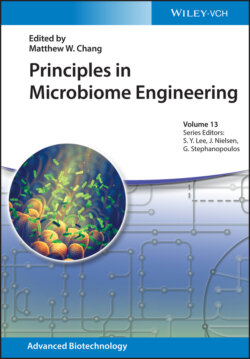Читать книгу Principles in Microbiome Engineering - Группа авторов - Страница 16
1.1.1.3 Skin Microbiome
ОглавлениеSimilar to the oral microbiome, skin microbiota varies at different locations depending on the presence of hair, sebum secretion, moisture, host biochemistry, and exposure to air [28]. The primary colonizers of the skin surfaces are predominantly Staphylococcus epidermidis, other coagulase‐negative Staphylococci, and Actinobacteria (from the genera Corynebacterium, Propionibacterium, Brevibacterium, and Micrococcus) [28] (Figure 1.1). The skin microbiota confers direct health benefits by occupying a wide range of skin, generating a shielding effect from the environmental pathogenic [28]. Through indirect interaction, certain skin commensal microbes can thrive in the subepidermal layer [29], establishing a link between the skin microbiome and the host immune system. Additionally, skin microbiota is known to affect the food quality particularly in fermented foods, where the by‐products of the fermentation, in turn, affect the host gut microbiota [30].
